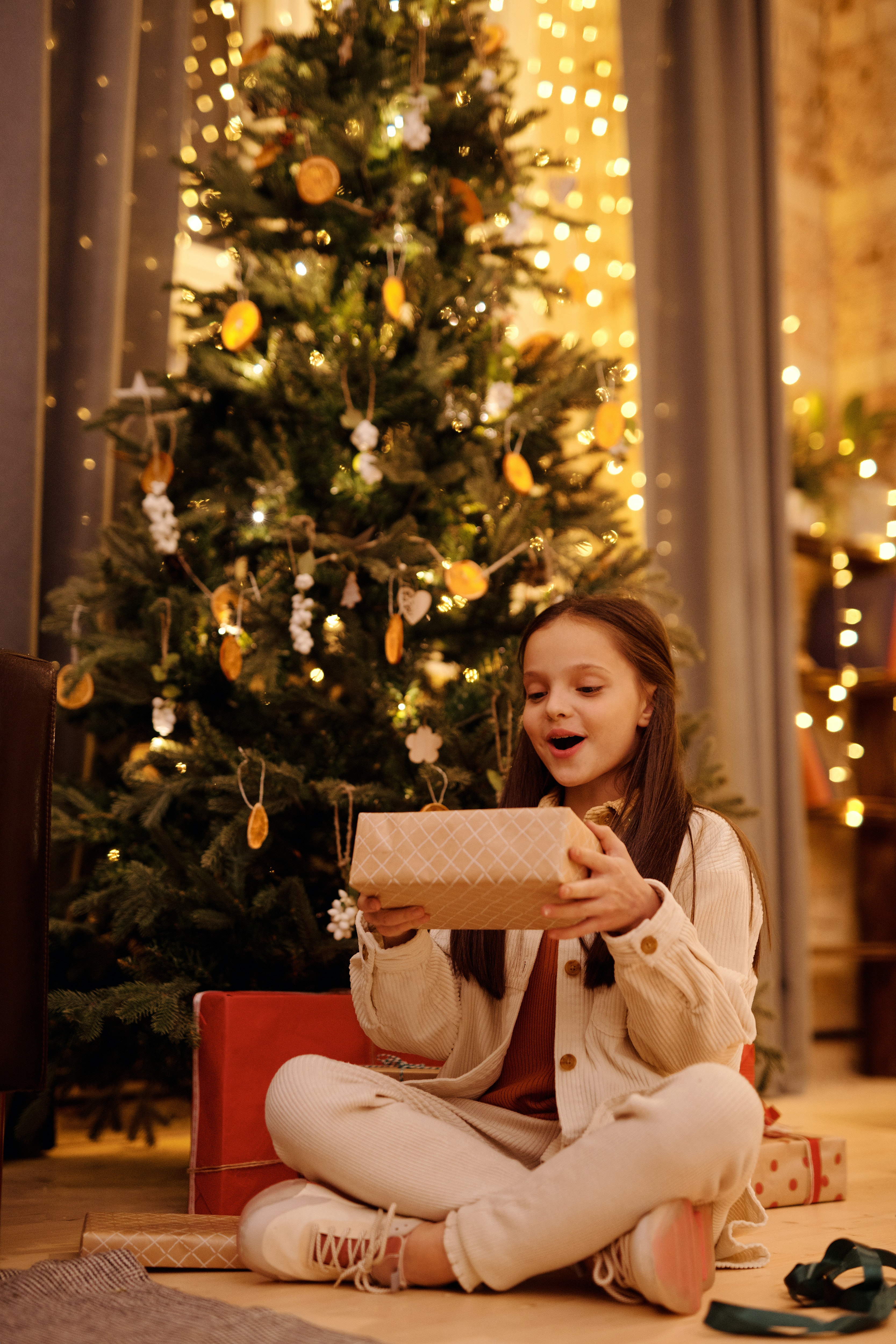You probably didn't know these amazing facts about Christmas and Santa Claus
Christmas has a unique quality, and children look forward to it more than any other holiday. Why shouldn't they, too? After all, Santa Claus gives them presents. But Christmas is much more than just giving and home decoration. Let's discuss the wonderful aspects of Santa Claus and Christmas.
The Coca-Cola campaign made Santa in a red suit become popularity all around the world
 |
| flickr.com |
A blue and green shirt is actually what Santa Claus is wear in past. He was also wearing some sort of red. The scarlet suit became well-known as a result of the Coca-Cola commercial campaign. However, it is clear that Coca-Cola advertising had a significant impact on creating the cheery figure we know and love today. Coca-Cola began developing advertising campaigns for Christmas in 1930. To paint a Santa for Christmas ads, the business hired Haddon Sunbloom. The plan was to keep people drinking Coke throughout the winter because the drink was associated with warm summer days. The famous 1822 poem A Visit from St. Nicholas, which has the line "Twas the night before Christmas, when not a creature was stirring, not even a mouse," served as his inspiration. It included a description of Santa Claus's looks, which helped to shape the modern representation. He depicted Santa with all the characteristics from Clement-description Moore's as well as wearing a bright red suit and toting a black bag filled with goodies. The red costume was an advantageous aspect of the character because it complemented the brand's advertising colors. That is how the image of Santa Claus in a red coat spread throughout the world.
Annually, more than 3 billion Christmas cards are sold in the US and UK
 |
| nottinghampost.com |
"Christmas is the largest card-sending holiday of the year, with about 1.6 billion cards sold in retail outlets," claims Mega Baucco, the largest greeting card manufacturer in the world. According to research, the Dutch are the top card-senders during Christmas. The proportion of households in Europe that send Christmas cards ranges from 68% to 76%. With 90%, the Netherlands are far ahead. After the holidays are done, the average Brit discards 24 Christmas cards. During the Christmas season, according to the Royal Mail, 150 million cards will be delivered. And according to some reports, one billion Christmas cards are sold each year. 811 million single cards will make up the whole UK greeting card market in 2021, down from 835 million in 2020 by 3%. However, the UK pays £26 million annually to dispose of holiday trash that is sent to landfills after Christmas. 12500 tonnes of Christmas decorations—worth £1.2 million—are dumped in landfills.
With almost 1.3 billion cards sent each year, Christmas is the holiday with the highest card-sending volume in America. More than 1,600 individual Christmas cards and more than 325 boxed card designs are among the more than 2,000 Hallmark Christmas card designs that are available. People send between 50 and 100 cards as we receive them from all over the world, but the number varies widely from person to person.
 |
| explodingtopics.com |
A closer examination at US holiday sales over time is provided here(source:- explodingtopics.com)
| Year | Sales | Sales Change Over Previous Year | Percentage Change Over Previous Year |
| 2010 | $528.8 billion | ↑ $26.1 billion | ↑ 5.2% |
| 2011 | $553.3 billion | ↑ $24.5 billion | ↑ 4.6% |
| 2012 | $557.6 billion | ↑ $4.3 billion | ↑ 2.6% |
| 2013 | $583.5 billion | ↑ $25.9 billion | ↑ 2.8% |
| 2014 | $611.5 billion | ↑ $28 billion | ↑ 4.8% |
| 2015 | $628.2 billion | ↑ $16.7 billion | ↑ 2.7% |
| 2016 | $646.7 billion | ↑ $18.5 billion | ↑ 3.0% |
| 2017 | $679.2 billion | ↑ $32.5 billion | ↑ 5.0% |
| 2018 | $691.5 billion | ↑ $12.3 billion | ↑ 1.8% |
| 2019 | $718.6 billion | ↑ $27.1 billion | ↑ 3.9% |
| 2020 | $777.3 billion | ↑ $58.7 billion | ↑ 8.2% |
| 2021 | $886.7 billion | ↑ $109.4 billion | ↑ 14.1% |
Christmas day isn't Christ's birthday
 |
| psephizo.com |
Jesus' birth year is assumed by the majority of biblical scholars to be between 6 and 4 BC even though it is not specified in the gospels or any historical source. The actual date of the birth of Christ, however, was not mentioned. As for the day or season when Mary is claimed to have given birth to him in Bethlehem, the Bible is essentially silent on that subject. But three methods are used to estimate the year:
- Examining the birth stories in the Gospels of Luke and Matthew for connections to previously recorded historical occurrences.
- The beginning of Jesus' mission as estimated and moving backward from there.
- Alignments determined by the stars or astrology.
 |
| biblicalarchaeology.org |
Boxing Day is actually about boxes
 |
| why-and-how.co |
In Britain, the day after Christmas is celebrated on the 26th as "Boxing Day." Boxing Day first appeared in late Roman and early Christian history. Samuel Pepys recorded some evidence that this festival had a beginning. According to a 1663 note in his diary, Boxing Day received its name from a sealed box containing lucky money that was found on board large sailing ships during the exploration period. The box was given to a priest, who opened it at Christmas and, if the journey was successful, distributed the contents to the less fortunate.
I published a piece on Boxing Day. Check out this page if you want to learn more about this day. Read More
On the Christmas dinner, turkeys took the place of peacocks
 |
| burtscateringbutchers.co.uk |
The turkey is a bird native to the New World, but if you believe the colonists had never tasted its tasty meat before boarding the Mayflower, think again. Before Plymouth was established, Spanish conquistadors may have discovered the bird. They transported it back to Spain, where everyone simply devoured it.
By the Victorian era, practically everyone was eating turkey or goose, having gradually supplanted the boar's head as the majority of people's Christmas feast. On his way back from the New World, Sebastian Cabot brought turkeys to Europe. They are thought to have arrived in Britain for the first time in 1526 thanks to a Yorkshireman named William Strickland who, while traveling, bought six birds from American Indian dealers and sold them for a penny apiece in Bristol. Traders who believed the bird originated in Turkey are supposed to be responsible for giving the bird its name.
 |
| localprofile.com |
Due to its ostentatious size and peculiar flavor, it gained popularity around Christmas time because, in the end, it appeared to be a delightful ball that the would-be diner could dig into. Today, it is prepared separately and served with a hot curry and wine to complete the dinner. In addition, more than 33 million birds are killed annually in the UK, with a third consumed over the Christmas season.
Originally, mince pies did contain meat
 |
| metro.co.uk |
However, the recipe started to evolve, becoming sweeter and smaller in size, losing the meat, and changing from the large, oblong shape that was once observed to a smaller round pie shape throughout Victorian times. The original pies, referred to as "coffins" or "coffyns," were savory meat pies with tall, straight-sided crusts or pastry and sealed-on floors and lids. "Traps" were open-crust pastries that lacked lids or tops. According to historians, pie crust was initially invented by the Greeks. Mince pies didn't stop having meat until the late Victorian era and the beginning of the 20th century (albeit with suet). The mince pie is now a popular sweet delicacy throughout the holiday season.
Worldwide data on food waste during the holidays
 |
| vitafoodsinsights.com |
- Compared to the rest of the year, the amount of waste produced at Christmas is 30% higher.
- Every year, 7.5 million mince pies are wasted.
- More than one in seven consumers in Britain buy more food than they require.
- Over the holiday season, more than 19,000 tonnes of turkey are prepared.
- For Christmas Day, people in UK buy 10 million turkeys.
- The main offender is the food we eat. A whopping 66% of respondents admit to overspending on Christmas food that is thrown out.
- Typically, 42 million servings of Christmas food are thrown out.
- Additionally, 17.2 million sprouts end up in landfills.
- 740,000 portions of Christmas pudding were also thrown away.
- We anticipate eating 25 million Christmas puddings this year, all of which will be covered in cardboard or plastic.
- Wasted are 11.3 million potatoes.
- 9,000,000 carrots are lost.
- Every year during the Christmas season, 500 million soda cans are sold.
- Over the holidays, beer consumption would fill 57 Olympic-sized swimming pools. This is roughly equivalent to 250,000,000 pints of beer.
- Nearly 45 percent of households reported discarding extra fresh produce.


.jpg)




Comments